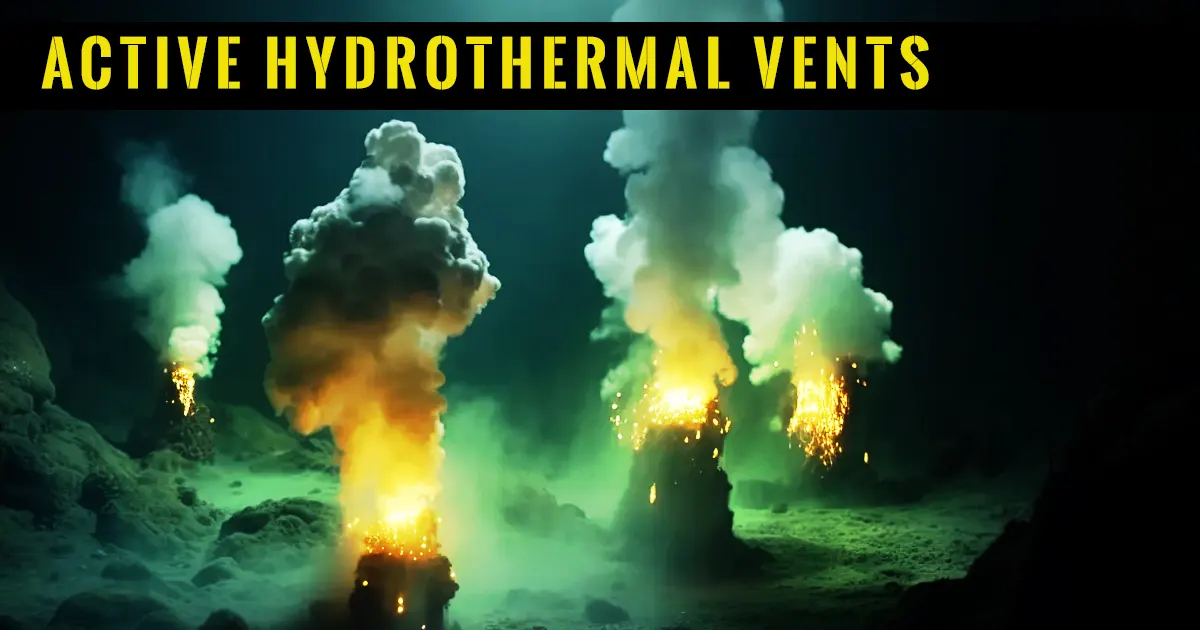GS 3 – Geography

Seafloor Hot Springs:
These are openings on the ocean floor where geothermally heated water escapes.
Tectonic Activity:
Hydrothermal vents are commonly found in volcanically active regions, particularly near mid-ocean ridges where tectonic plates are diverging.
Formation Process:
- Seawater seeps into cracks in the oceanic crust.
- The water becomes superheated by the underlying magma.
- The hot water dissolves minerals from the surrounding rocks.
- This mineral-rich, hot water then flows back out into the ocean, forming the hydrothermal vent.
Types of Vents:
- Black Smokers:
These vents release very hot water (above 350°C) rich in sulfides, causing the water to appear black. - White Smokers:
These emit cooler water containing lighter-colored minerals like barium, calcium, and silicon.
Importance of Hydrothermal Vents:
- Unique Ecosystems:
Hydrothermal vents are home to ecosystems that thrive without sunlight. - Chemosynthesis:
Specialized bacteria and archaea at these vents use chemicals such as hydrogen sulfide to produce energy, forming the foundation of the food web in these ecosystems. - Biodiversity:
These habitats support a wide variety of unique organisms, including tubeworms, giant clams, and vent crabs. - Origin of Life:
Some scientists theorize that life on Earth may have originated in the extreme conditions found around hydrothermal vents.




